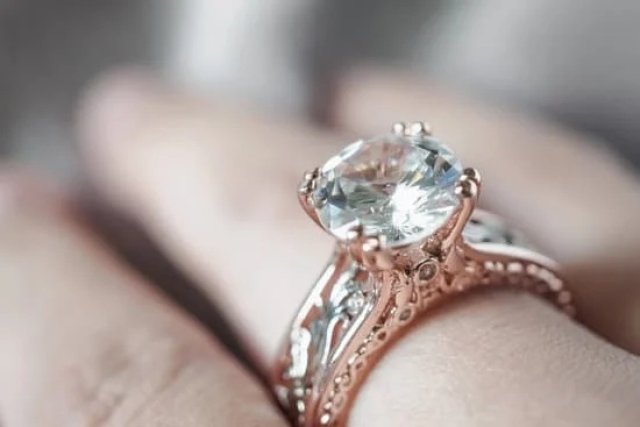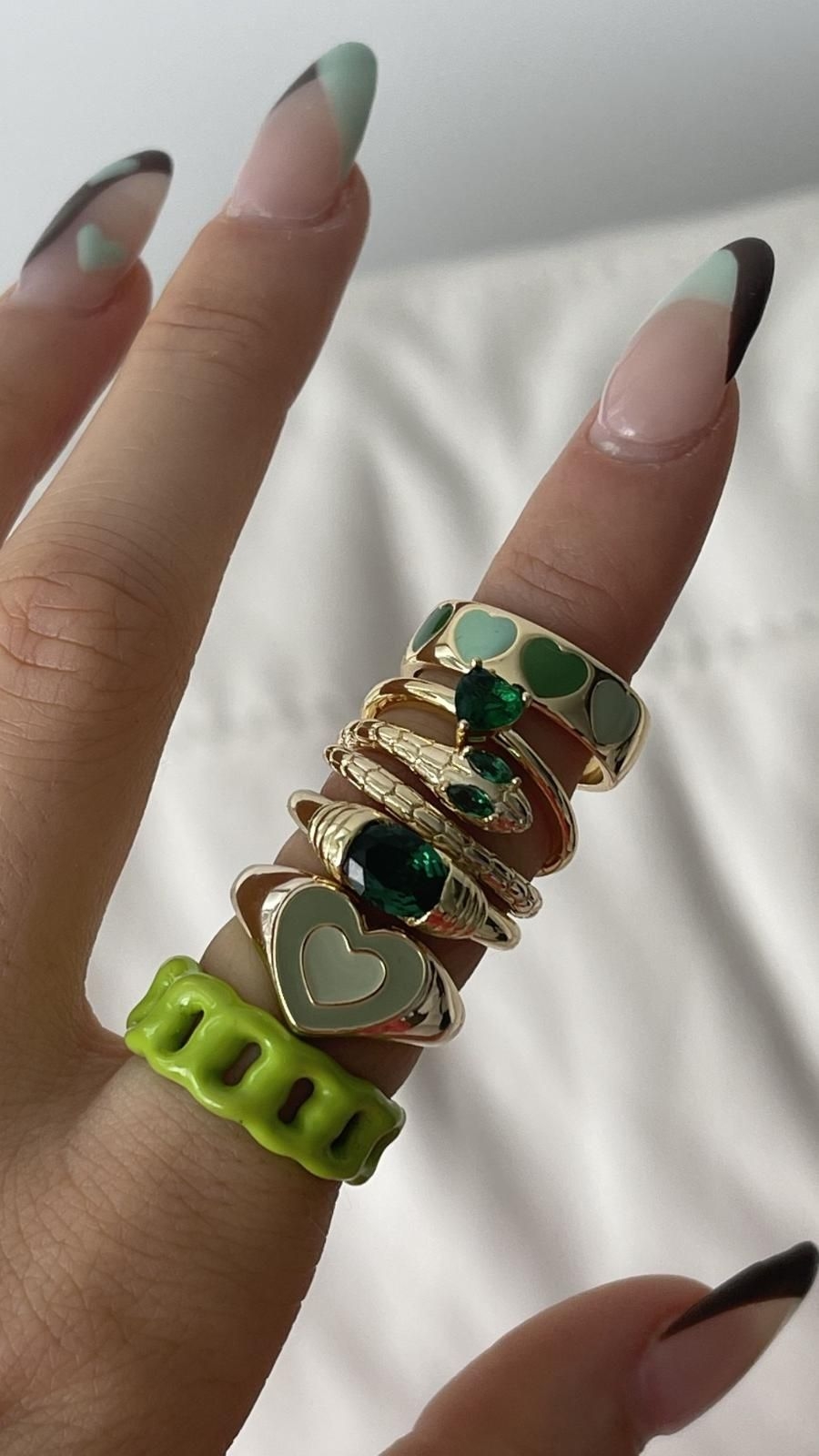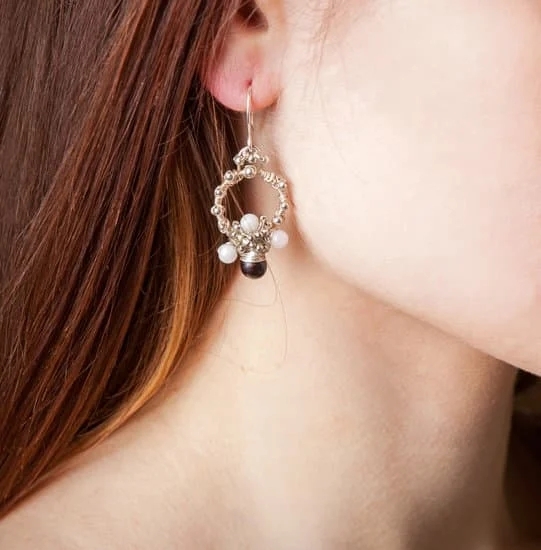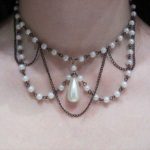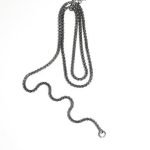Cheap jewelry material can be a delightful way to add flair and accessorize your clothing without breaking the bank. The most attractive benefit of wearing affordable jewelry is that you won’t have to worry about losing or damaging it, since you are not heavily invested. However, these items tend to lose their sheen or break after minimal use.
When selecting jewelry as an accessory, it’s important to consider the various types of inexpensive materials in order to determine which type would work best for your individual needs. Commonly used materials include brass, copper, aluminum, and plastic. Depending on the quality and craftsmanship, many of these items are available for a fraction of the cost when compared to manufacturing with precious metals such as gold and silver.
Brass is usually cheaper than other forms of jewelry material due to its predominately copper content; copper is very durable but also soft meaning that regular wear quickly dulls its coloration. On the flipside, brass pieces are easy to clean as they can provide their own acidic polish from lemon juice and salt just from simply rubbing them together which can help restore their slightly tarnished glow.
Aluminum is another affordable option when looking for jewelry material however this metal is much softer than brass needing extra care when handling it in order to prevent damage such as scratches or dents that might alter its form or shape; light touch and careful cleaning with water should do the trick.
Aluminum also has a unique ability in that it will oxidize rapidly when exposed to elements like sunlight or water creating beautiful rainbow patterns on the metal’s surface making them a great affordable alternative if you’re looking for a more bold look.
Popular Low-Cost Metals for Jewelry
Making jewelry is a popular way to express one´s creativity, but it can be expensive. Fortunately, there are several low-cost jewelry materials available for craftsmen and hobbyists on a tight budget. The following is a list of metals which have become the most popular for making cheap but beautiful accessories:
- Aluminum – Aluminum wire is lightweight and easy to bend into shape with pliers. It is resistant to oxidation and does not tarnish. Additionally, aluminum can be dyed in both bright and subtle colors.
- Brass – Brass has an attractive golden hue which resists fading over time, as well as corrosion from the elements. Its malleability makes it easy to work with, even without the use of specialized tools.
- Copper – Copper is cheap to buy in either wire or sheet form, as well as being extremely durable and easy to work with in its malleable state. Furthermore due to the nature of its oxidation it develops an attractive patina over time that many people find visually appealing.
- Plastic – Plastic beads are available in a wide variety of shapes and colors at very affordable prices when compared to other materials. Furthermore they can also provide interesting effects when used together with more traditional materials such as metal or glass.
Using these metals in various combinations can produce striking designs that will last for years while costing significantly less than items made using precious metals such as gold and silver. With their low cost bartering them allows for creating larger pieces that will require much more expensive rolls of metal if one were to fashion them out of precious gold and silver alloy metals.
For instance one could make simple earrings out of brass significantly faster than fumbling around trying to cut gold or silver wires using pliers while saving money in the process due the lower cost per unit for brass based products compared with their precious metal counterparts.
Synthetic and Natural Stones for Affordable Jewelry
Affordable jewelry can come in a wide variety of material, depending on the specific look or feel you wish to achieve with your pieces. Synthetic stones are a great option for those looking for budget-friendly jewellery that looks luxurious – highly reflective lab-created stones can give your pieces a luxurious feel without the higher price tag.
For example, cubic zirconia ties closely resemble diamonds but provide an affordable option; likewise, quartz crystals and moissanite gemstones are powerful alternatives with a beautiful sparkle.
Natural stones, although sometimes pricier to purchase outright than synthetics, often last longer due to both their durability and their aesthetic; they tend to be more vibrant and varied in colour than lab-created options as well. Examples of natural stone include pearls, turquoise stones, and sea glass – they’re perfect for those wanting to make classic fashion statements which will never go out of style. Here is a brief list of some common natural materials:
- Pearls
- Turquoise Stones
- Sea Glass
- Jasper
- Garnet
- Rose Quartz
Metal is another popular material used in jewelry making – although it often comes at a higher price than other materials mentioned, metal is durable and loved by modern fashionistas worldwide. Pewter and gold-plated brass are two good choices for those wishing to achieve their desired look without breaking the bank too much; however silver may be the best middle ground between cost-effectiveness and high luxury.
Younger generations may also opt for bolder materials such as zinc alloys (nicknamed “tibetan silver”), stainless steel or titanium alloy for optimal wearability that won’t tarnish quickly like traditional metals would.
Out of all precious metals available on the market today it’s gold which still remains the most sought after choice – whether it’s in its pure form or if its alloyed with other metals such as copper or silver. Besides being hypoallergenic and being seen as a symbol of wealth across many cultures around the globe, golds popularity has been on an rise due to its stylish yet timeless aesthetic.
Benefits of Wearing Cheap Jewelry Material
Wearing cheap jewelry material can be a great way to jazz up any ensemble or show off your personal style. Not only is it inexpensive, but the materials used are often much lighter than other, more expensive pieces of jewelry.
This can lighten up an outfit and make it easier for the wearer to move around without feeling weighed down by heavy necklaces or bracelets. In addition, most of these materials require little maintenance, meaning you don’t have to worry about polishing or special cleaning techniques.
Durability
Cheap jewelry material is also surprisingly durable that could easily withstand regular wear and tear. For example, faux pearls made out of plastic often stay shiny even with regular everyday wear while wooden beads may feature stainless steel wire cores that make them very sturdy. Another good option in terms of durability is acrylic which can come in all kinds of interesting shapes and sizes while still being able to withstand plenty of rough treatment.
Style
It doesn’t matter if you’re looking for something classic or something more unique – there a plenty of different styles available when it comes to cheap jewelry material. Take stainless steel for instance – this strong metal works for almost every style from urban chic to bohemian chic alternatives and everything in-between as well.
You can also find plenty of interesting necklaces, earrings and rings made out of various weaves so if you’re looking for something a bit more unique there are plenty of options open to you.
Ease Of Shopping
Finally, buying cheap jewelry material is incredibly easy thanks to online stores such Amazon or eBay which stock pieces by independent sellers and craftspeople alike. You might be pleasantly surprised with some real gems too so take your time when browsing and familiarize yourself with the range available before purchasing anything – after all, shopping online gives you access to markets far beyond what would normally be available at your local store.
Expert Tips for Spotting Quality Jewelry on a Budget
It’s always exciting to purchase a piece of jewelry, especially if it is on sale for a discounted price. Unfortunately, cheap jewelry can sometimes have a bad reputation for being low quality and easily broken.
But, there are still some amazing deals to be found on beautiful jewelry pieces which will last for years to come. Here are some tips for knowing what to look out for when looking at an inexpensive piece of jewelry and spotting quality jewelry while shopping on a budget.
Choosing the Right Material
The material that the jewelry is made from is an important factor in determining the overall quality of the item. A good place to start when searching for high-quality cheap jewelry is by looking for items with sterling silver or 14K gold plating.
Sterling silver or solid gold may also be available at lower prices as well, but this really depends on what you’re looking for in terms of both aesthetic and cost. These materials are best because they will hold up over time and keep its shine longer than some other materials like brass or nickel which may discolor more quickly.
Checking Stone Quality
For those who prefer their jewelry with accent stones, taking extra caution must be taken when shopping on a budget in order to get high-quality products. One way to spot good stone quality is by examining their cut and clarity since higher grade stones are often more expensive than lower graded ones.
On top of that, inspect whether the stone(s) were mounted correctly with prongs that do not appear too stretched out or squished in over the stone’s edges as this may lead to loss of any stones attached during wear or transportation. Additionally, large accent stones should look bright with no visible flaws like chips or pits within them which could indicate they are not genuine gemstones.
Inspecting Craftsmanship Details
When inspecting craftsmanship details on an inexpensive piece of jewelry one must consider engineering specialties such as how secure any clasps are and whether there are any additives like glue which was used instead of soldering metal pieces together into one solid piece.
Carefully running your finger pads across all areas of the metalwork should help discover any rough spots where poor welding may exist, however tiny these spots may be as these can weaken over time and cause breakage eventually down the line.
Additionally, make sure any designs featured have been engraved deep enough into the small metal spaces as shallow engravings fade away quicker than deeper ones do after constant wearing.
Considerations When Choosing a Jewelry Material
When making the decision to purchase jewelry often an important element to consider is what material it is made from. The choices are quite vast and each have their own unique appeal, varying levels of durability, and cost. One of the most reasonably priced options for jewelry making materials is base metals such as copper, brass, and alloy metals like surgical stainless steel.
Cost
Base metal jewelry materials are significantly less expensive than other popular metals used in the production of jewelry like gold, silver, and titanium. The price difference can allow buyers to select several pieces at once or purchase pieces with larger stones or more intricate designs without sacrificing quality due to that design’s cost. Jewelry made from these resources can add a major impact to any outfit they become part of while not straining their wallet.
Durability
Cheap jewelry may mean some compromise on durability but there are available alloys that are created just for the purpose of adding strength to these less expensive metal types. For example brass is an alloy comprised mostly of copper (55-95%). It is mixed with anywhere from 2-45% zinc which helps provide more hardness than pure copper alone can manage.
These alloys also help reduce oxidation relative to the parent material as seen in jewelry items labeled “antiqued brass” or “oxidized sterling silver”. Even still, since these cheaper alloys still lack the same elemental strength as gold or other higher quality metals some form of care should be taken with them if long term use is expected.
Humidity and Environment
Metals like aluminum oxidize easily in humid environments which makes them not well suited for wearing outdoors or near bodies of water since both will contribute greatly to oxidation rates over time eroring away at its resistence even more quickly than normal wear would.
Copper in turn will react with ammonia coming off skin in humid climates forming a greenish tinge on its surface called patina while certain alloys mixtures resist this process somewhat better than others do(depending on each elements individual reactivity with oxygen, humidity etc).
Cheaper base metal based alloys tend towards darker colors such as blackened steel created by etching off aluminum oxide above depths engineered into the grain structure that prevent further oxidation thus providing greater longevity relative to pure non-resistant materials like aluminum or nickel themselves.
Jewelry Personalization with Affordable Materials
One of the best ways to personalize your jewelry is by using inexpensive materials. There are so many different types of low-cost materials that can be used to create beautiful and unique pieces of jewelry that are sure to turn heads. From stones and wire to shells and beads, these affordable materials offer plenty of options for personalization.
- Stones
- Wire
- Shells
- Beads
Stones are popular choices for creating simple yet stunning jewelry pieces. Natural stones like amethyst, ruby, sapphire and turquoise come in a variety of shapes and sizes; allowing you to customize your jewelry with unique details such as patterns or colors. Wired etched stones or glass cabochons can be combined with metalwork or semi-precious stones for an extra special touch.
Wire is an extremely versatile material for creating personalized designs. You can use any type of wire including copper, silver and gold plated wires to craft complex pieces that feature intricate detail work or winding spirals. This type of wirework is often employed in necklaces, pendants and earrings, lending depth and texture to the piece.
Shells also make excellent choices for budget-friendly jewelry making projects because they range in size from small buttons to large spiral shells which makes them perfect for many types of designing styles such as mosaic inlay work or beach inspired statement pieces. Smaller shells can also be used as tiny beads which provide a splash of color while larger shells can act as pendant beads when stitched together with metallic tubing or thin chain links.
Finally, beads are another great choice when it comes to getting creative with your jewelry designs. Beads come in a wonderful variety of styles, shapes, colors and sizes which gives you access to endless possibilities; from brightly colored charm charms to delicate gemstones or sparkling crystals – each bead adds its own unique flair. Additionally, there are even kits available on the market that allow you create your own custom bead designs.
Tips for Cleaning and Caring for Cheap Jewelry
Buying jewelry on a budget doesn’t mean compromising on quality – it just means understanding what materials are going to give you the most bang for your buck. We’ll go over some of the options available, as well as how to correctly clean and care for your cheap jewelry before you wear it.
One of the most popular materials for inexpensive jewelry is costume jewelry. This type of jewelry is made from base metals such as copper, nickel, and zinc which are then plated with precious or semi-precious metal or other coatings. Another option if you’re looking for cheaper materials would be synthetic stones. These simulated stones look very similar to real gems but they’re created in a lab using glass instead of mined from a rock.
Cleaning and Caring for Cheap Jewelry
When it comes to keeping cheap jewelry looking its best, proper cleaning and care is key. It shouldn’t take much effort – here are some easy steps:
- Before wearing any pieces of jewelry, inspect each item for wear or damage.
- Avoid exposing your pieces to harsh chemicals such as chlorine, perfume and hairspray.
- To keep your pieces shiny and tarnish-free, store them in an airtight plastic bag or wrap them in tissue paper when not wearing them.
- Dirt buildup can be removed with mild soap such as dish soap and warm water applied with a soft toothbrush or cloth.
- Once clean, dry off the piece completely with a soft cloth before storing it away until next time.
- If needed, use commercial cleaners designed specifically for use on more delicate metals like gold and silver.
Conclusion
Exploring the world of affordable jewelry material is an exciting journey. There are so many different options to choose from that there’s something for everyone. During your search, consider pieces made from sterling silver and brass as these are some of the more popular metals used in jewelry making.
Natural stones such as turquoise, opal, or jasper can also bring beauty to jewelry pieces for a fraction of the cost. Other materials like wood, enamel, or nylon can add interesting textural elements to necklaces, rings and earrings. Don’t forget polymer clay can be made into beautiful shapes and baked in the oven for homemade creations.
Consider polymer clay to make intricate jewelry designs a breeze. Polymer clay comes with its own set of supplies and tools that can be used for cutting, stamping, forming textures on the surface of beads or finials. This unique material is highly malleable allowing one to craft nearly anything they visualize.
What’s even better is that this medium doesn’t require any torches nor does it require expensive equipment; using rubber stoppers users can easily attach jump rings and findings whatsoever they please without welding or other messy methods associated with metalwork supplies. Polymer gems look great after baking in the oven because the colors stay true; making it perfect to use when designing intricate bracelets or necklaces with various hues found only in nature.
Another type of affordable jewelry material worth considering is alloy metals such as brass, copper alloy, and nickel-free alloys which comprise Pewter style findings. These metals are relatively cheap while still having a luxury feel thanks to their shiny coatings available in rose gold and bronze tones.
Most importantly though this type of metal has an incredible strength-to-weight ratio that guarantees long-lasting accessories for everyday wear. The color variations it offers makes finding the perfect components possible whether you want simple keychains that feature small gemstones-or larger links decorated with eye catching animals or abstract characters.
In conclusion, exploring affordable jewelry materials opens endless possibilities for creating your own unique pieces from scratch at home. Consider investing in small amounts initially just so you can experiment and get a feel for what materials you prefer using before purchasing larger quantities later on as needed.

Welcome to my jewelry blog! My name is Sarah and I am the owner of this blog.
I love making jewelry and sharing my creations with others.
So whether you’re someone who loves wearing jewelry yourself or simply enjoys learning about it, be sure to check out my blog for insightful posts on everything related to this exciting topic!

